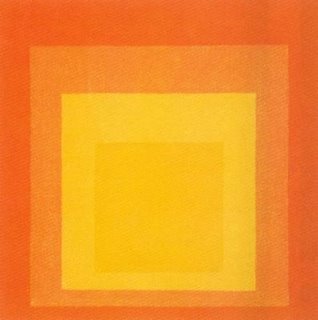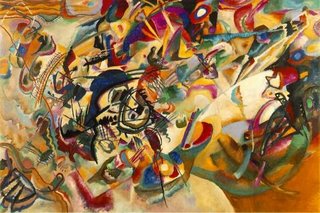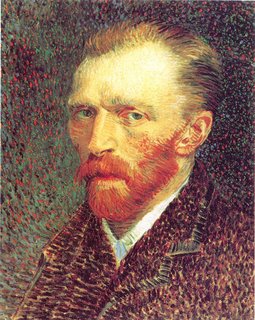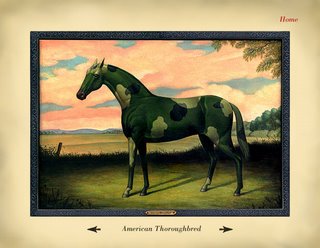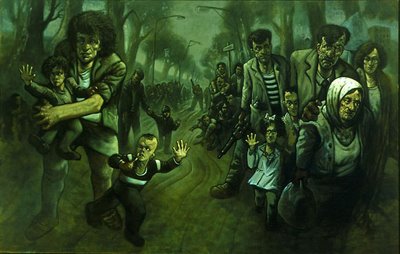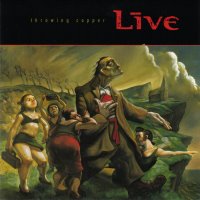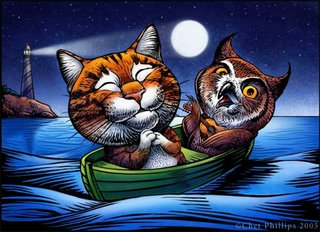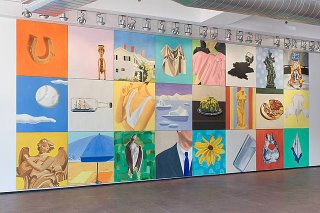Blog Entry #5
The artist I looked up was Mark McKean. He is a British artist and has contributed heavily to many fields. His contributions to digital art are what intrigued me most. He has done a lot of artwork, also, for musician's CD covers. (Toad the Wet Sprocket among them, one of my personal favorites.) He does not particularly stand out in the field of digital art for the digital art itself, but because his art is so eclectic. He has done so much that it is impossible not to be impressed. The most impressive part of Mark McKean's work is that he has done it all. He has even directed movies.
McKean uses dominance heavily in color, as evidenced below:
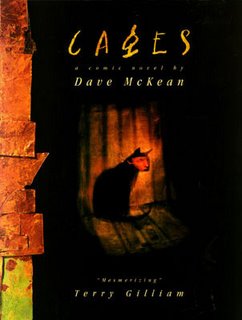
There is a clear dominance structure rooted in color, which leads to movement around the image. This particular work is the cover of his renknowned graphic novel. There were actually ten separate comics about artists and creativity, but they were combined to form this graphic novel.
The human form is subject to many of McKean's works, and he keeps it fairly realistic (albeit many of his pieces are surreal in nature.)
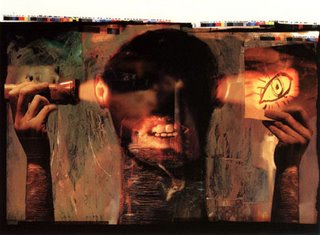
The hands are very realistically rendered, although the head itself is strange looking. It is fairly obvious that McKean has mastered the human form, however, as the shading and colors are photorealistic.
After seeing McKean's work, I can see that in order to find a pidgeon-hole of sorts in a specific field, it may be necessary to have a firm knowledge of other fields as well. In other words, it is okay to experiment with other mediums and not confine oneself to just one field.
In terms of color, McKean's work seems to be very warm-color oriented. In fact, I had trouble finding a cooler color work.

Again, McKean seems to identify with a warm temperature palette. Most of his works seem to be surreal in nature, and the images are often broken and fragmented. There is usually a clear dominance structure (as in this piece) and often a lot of negative space that is broken up through the use of color. The pieces are odd, to say the least, but I think that is what makes McKean so interesting.
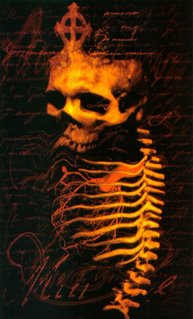
This piece creeps me out. As I said earlier, his work is very eclectic and has appeared most everywhere. He has had galleries in New York City, magazine and comic book covers, and CD covers. His signature is not often on his work, but it is very unmistakable.
In terms of how McKean produces his work, he usually combines the traditional approach of painting with techniques in Photoshop. He often incorporates text in his images, which we had to do earlier this year.
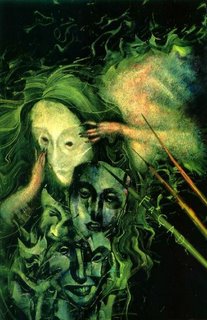
Overall, it has been interesting learning about Dave McKean and I have learned a lot from his work, even though I don't really understand what is going on in most of them. He is the quintessential artist and it is a shame that he is not widely known outside his fanbase.
